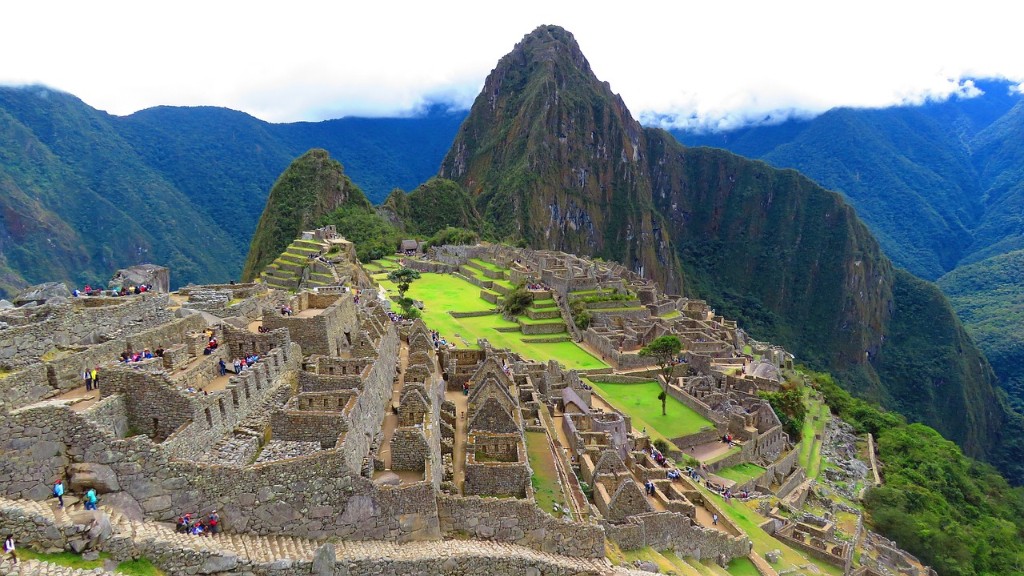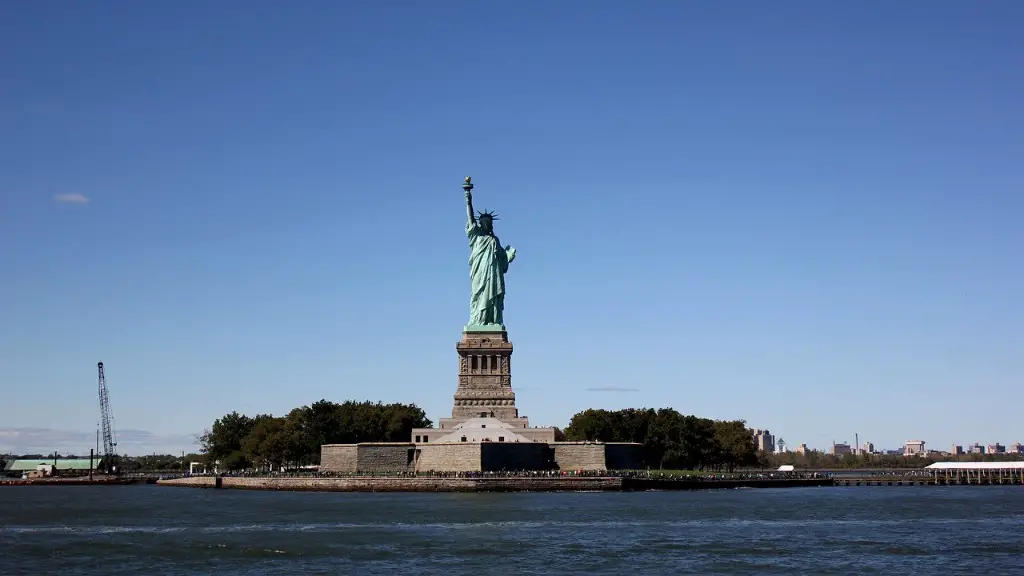The renowned La Sagrada Familia in Barcelona, Spain has been under construction for over 130 years and is expected to be finished sometime in the 2040s, making it the longest running construction project in the world. Construction of the cathedral originally began in 1882 under the architect Antoni Gaudi, and while the majority of its design is credited to Gaudi and his legacy, there have been other architects who’ve worked on the project that have left their mark as well.
Since its initial start in the 1880s, La Sagrada Familia has garnered much fame throughout Spain and the rest of the world. For locals, it is a symbol of pride, but for many it has become a popular tourist destination as it stands as one of the most unique works of architecture in the world. Gaudí’s unique design of the cathedral coupled with its immense size and impressive duration has made it an international figure in the world of architecture.
Due to the long timeline of its construction, the actual process of building La Sagrada Familia has been arduous and lengthy. Gaudí was initially put in charge of the project in 1882, but his untimely death in 1926 meant the cathedral would never be completed according to his design. Many other architects have taken up the mantle of completing the cathedral, but due to the enormous size of the project and the complex style of its design, the process has been slow and often difficult.
Aside from some structural challenges, disagreements over the budget and a lack of funds have also delayed construction for long periods of time. Due to its historical and cultural importance, the local government has provided La Sagrada Familia with necessary funds to keep construction on track, but with the long history and intricate details of the project, keeping up with the task is still very challenging.
One unique feature of La Sagrada Familia is the way it is being built. As the construction progresses, visitors can witness the architectural and artistic processes that are being used to bring the cathedral to life. Inspired by nature, Gaudí encrypted references to natural forms within the design of the building, immersing visitors in a unique and breathtaking experience. Furthermore, the ongoing construction gives visitors an opportunity to see the work of both artisans and engineers who, despite the many difficulties, have dedicated their time and effort to ensure that Gaudí’s vision is honored.
It is clear that La Sagrada Familia is a project of immense scale and a symbol of Barcelona’s determination and resilience throughout the course of its impressive 130 year construction. For many, the project serves as a reminder of Gaudí’s vision and timeless legacy, one that will most likely continue to lure in visitors from all over the world even after its completion sometime in the 2040s.
Building Materials Used In La Sagrada Familia
Throughout the year and a half under construction, La Sagrada Familia has been built with a variety of materials commonly used in the architectural industry. These materials have been chosen for their durability, aesthetic value, and easy accessibility. Stone is the most commonly used material, as it provides a solid foundation that can withstand time, harsh weather conditions, and vandalism. Other popular materials employed by the artisans and engineers building La Sagrada Familia are bricks, tiles, cement and stucco.
Stone lends itself to the intricate details and unique aesthetic of the cathedral, as its solidity makes it ideal for the construction of such a large and long-term structure. Bricks and tiles are part of the decorative aspects of La Sagrada Familia, used to enhance the overall design with intricate patterns and other ornamentations. Finally, cement and stucco are the standard material used to secure the foundation and create a strong yet flexible bond between the stone and other materials.
The combination of these materials is not only practical but also aesthetically pleasing, as Gaudí carefully chose each material to ensure it adds to the beauty and appeal of the cathedral. While modern construction techniques are employed, the overall look still harkens back to Gaudí’s original vision, further strengthening the cathedral’s historical significance.
Gaudi’s Uniqueness In Design
One of the most remarkable aspects of La Sagrada Familia is the uniqueness of its design. Gaudí employed a multitude of styles in order to bring his vision for the modernist cathedral to life. He had a knack for combining traditional and modern elements in a manner that was unlike other architects of his time. He showcased this skill through the use of different shapes, intricate ornamentations, and the combination of numerous materials to showcase his most ambitious project.
Gaudí’s unique design choices have been so influential on the developing world of architecture that the works of later architects are often compared to his style. His skillful blend of traditional and modern styles has become a point of reference for today’s architects, many of whom strive to achieve the same level of creativity and perfection as Gaudí did.
In Madrid alone, numerous structures can be seen that have elements of Gaudí’s design. With La Sagrada Familia still being under construction, it’s clear Gaudí’s influence is still being felt to this day.
The Economic Impact of La Sagrada Familia
Given its large size, ambitious design, and lengthy construction period, it is no surprise that La Sagrada Familia has had a significant impact on the economic development of Barcelona. Construction on the cathedral has provided thousands of workers with employment opportunities, and has resulted in a large influx of capital into the region.
This influx is not only beneficial for the workers but also for local businesses, as tourists from all over the world travel to see the impressive cathedral. The sheer size of the project, as well as the historical and cultural importance of the cathedral, has made it a major attraction amongst tourists and locals alike, resulting in a large boost in the local economy.
Additionally, Gaudí’s unique design and the many intricacies of the project have caused excitement amongst architecture students and experts from all over the world. Not only does La Sagrada Familia provide economic benefits for the region, it also provides an opportunity for aspiring architects to learn from a true work of art.
The Charity Behind La Sagrada Familia
The construction of La Sagrada Familia has also been supported by a charity foundation that has been running for over 100 years. This foundation, called ‘Fundació La Sagrada Familia’, was formed in 1925 to ensure that Gaudí’s vision was preserved. The foundation provides financial support and puts in a lot of effort in order to keep the construction process moving forward.
The charity’s efforts have also seen the involvement of many renowned and talented architects and artisans who have infused their passion and skill into the project. Not only is this important for the preservation of Gaudí’s vision and the continuation of construction, but it also serves to inspire the youth and promote a culture of architecture in the region.
The Foundation’s activities has also created a sense of pride amongst the locals, as they can now see their own unique cultural identity reflected in the magnificence of the La Sagrada Familia.
The Timelessness Of La Sagrada Familia
The 130 year construction time for La Sagrada Familia is evidence of the immense scale and complexity of the project. It is a true testament to Gaudí’s vision and legacy, as the cathedral stands as one of the most creative and unique works of architecture in world history. Its construction has provided opportunities and inspiration, while also highlighting Barcelona’s pride and determination.
The timelessness of La Sagrada Familia is beyond that of any other structure. Its significance transcends across time, uniting the past, present and future, and provides an opportunity for visitors to witness the awe-inspiring beauty of Gaudí’s architecture for centuries to come.
The Current State of La Sagrada Familia
Construction for La Sagrada Familia has come a long way since its initial start in 1882, and as of 2020 it is estimated that 95% of the project has been completed. In spite of some delays and difficulties, the current rate of construction shows that the cathedral is moving closer to completion day by day.
Furthermore, Gaudí’s original architectural plans and vision still remains intact up to this day, as the credits and testimonials of those involved with the project are a testament to the resilient and persistent attitude of Barcelonans over the whole 130 years.
Currently, the La Sagrada Familia still remains under construction, with the majority of its design completed. In order to prevent any further delays or unforeseen problems, the foundation works hand in hand with the local government in order to ensure that the completion of the project goes as smoothly as possible.
The Process After Completion
When La Sagrada Familia is finally completed in the 2040s, the project will not stop there. Being such a huge undertaking and an icon of Barcelona, the cathedral will be maintained and restored even after it is completed. Having been in the works for such a long time, it is only fitting that some form of preservation and upkeep be done in order to preserve its magnificence for many centuries to come.
In particular the stained glass windows, sculptures and other creative aspects of the cathedral will need proper maintenance in order to sustain its beauty. Furthermore, the foundation will also employ experts to look after the technical aspects of the cathedral, such as its structure and its electrical and water systems, in order to ensure that La Sagrada Familia stands the test of time.
The completion of La Sagrada Familia is set to be a momentous occasion. In spite of the many delays and difficulties, construction has persevered and is slowly but surely heading towards its finish. The completion of the 130 year long project, together with its strong emphasis on protection and preservation, serves as a reminder of Gaudí’s genius and Barcelona’s resiliency.


